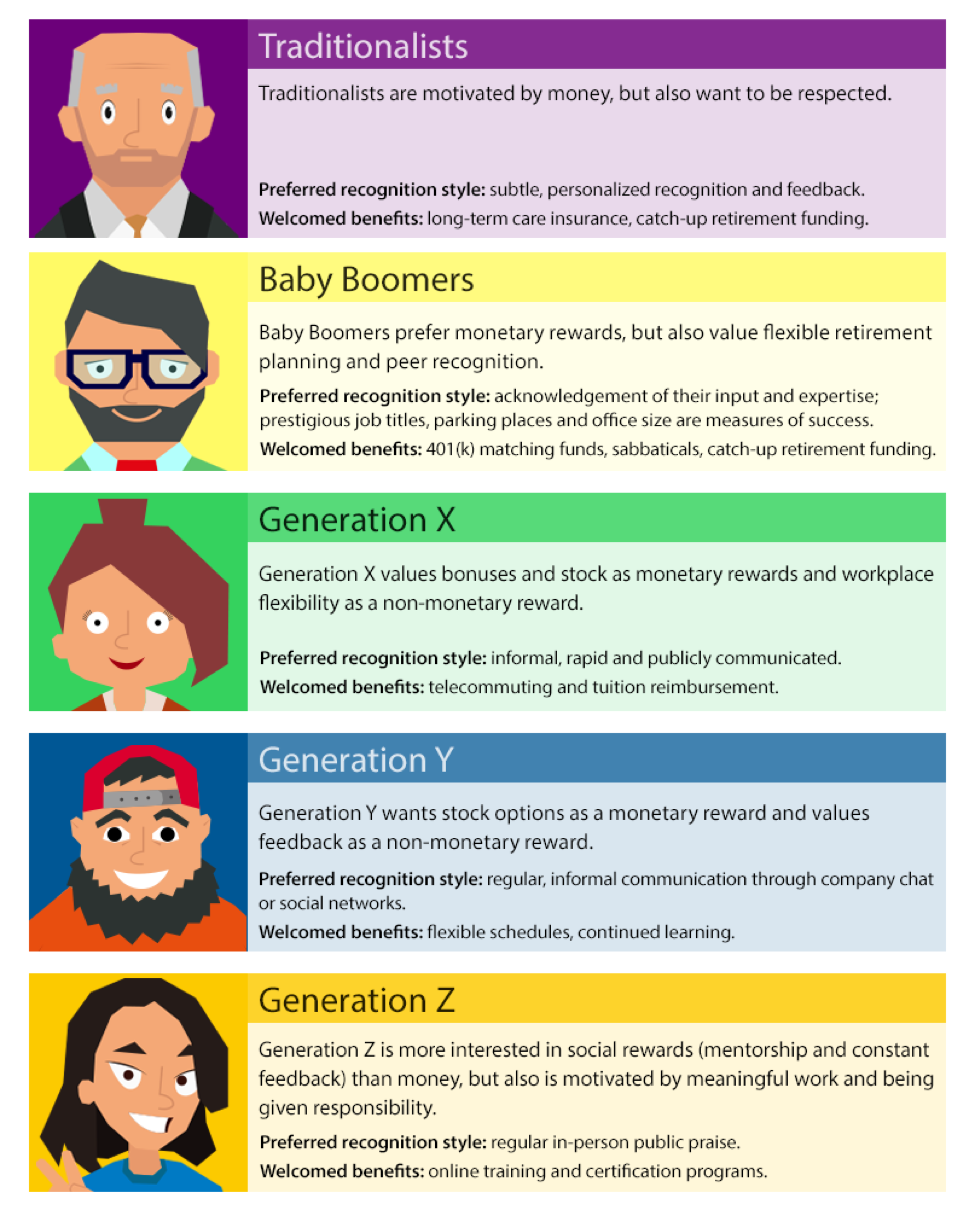Currently, there are five generations in the workplace, making it a challenging opportunity for management and organizations.
Members of each generation have distinct values, attitudes, and behaviors that they bring to the workplace. The multigenerational workforce requires patience and flexibility regarding policies and programs.
- Veterans or Traditionalists, (born 1928-1945), are now 3% of the workforce and will be 1% in 2020.
- Baby Boomers (born (1946-1964), are now 31% of the workforce and will be 22% in 2020.
- Gen X (born 1965-1979), are now 21% of the workforce and will be 20% in 2020.
- Gen Y or Millennials (born 1980-1995), are now 45% of the workplace and will be 50% in 2020.
- Generation Z or Globals/Gamer Generation (born 1996 and later), are now 1% of the workforce and will be 7% in 2020.
What Motivates each Generation:
So How Do You Motivate the Different Generations?
- Technology is King – create a platform where employees can share their successes. Regardless of the generations, recognition is critical.
- Conduct focus groups – managers need to conduct focus groups with their employees on how they like to be recognized for their accomplishments.
- Customer Service – make the customer the priority. This is what every generation needs to work for as a common purpose.
- Personal growth – Work-life balance should not be “lip service”. Companies need to understand what that means to each individual.
- Develop mentorship program – start reverse mentorship programs in which the employee and manager are both developed. Discuss strengths rather than developmental issues.
- Define the culture – this is important for any employee so that it can be explained to everyone!
- Management Selection – Select managers based on experience, aptitude, capacity for growth, leadership style, flexibility, maturity and understanding of organizational and employee challenges and opportunities.
- Education – constantly educate generations on the latest opportunities of learnings. Let each generation contribute in the way they want.
Reference: Gurchiek, K. (5/9/2016). SHRM. Org

